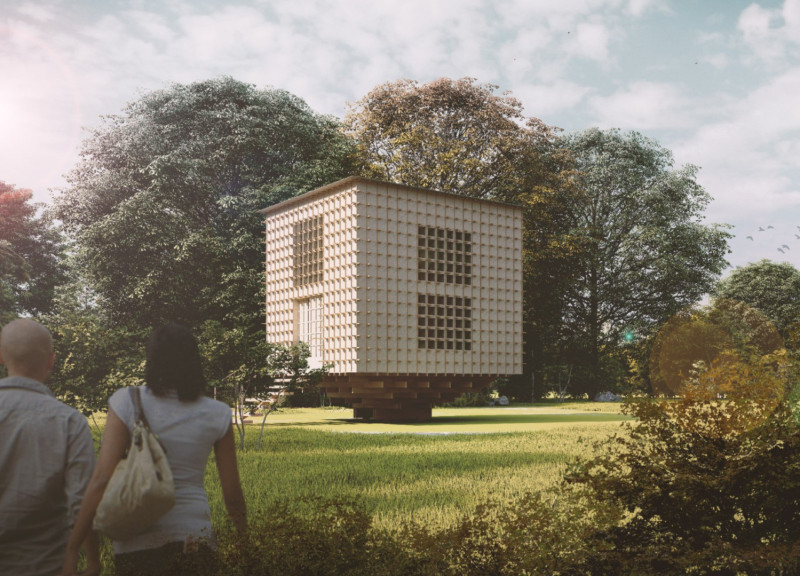5 key facts about this project
Nucleus House presents a thoughtful response to the need for sustainable living within a compact design. The residential structure is based around a central cube, which houses essential living spaces in an efficient arrangement. Key areas such as the kitchen, bathroom, office, and living room are positioned around the sides of the cube, while the bedroom sits above. This layout optimizes available space and emphasizes comfort and convenience for its occupants.
Materials Selection
-
The design incorporates a range of materials that align with sustainability goals. Wood is used for its structural strength and warmth, creating a welcoming environment. Polycarbonate is included for its lightweight nature and clarity, allowing plenty of natural light to fill the interior while providing views of the surrounding area.
Mycelium Panels
-
An innovative aspect of the building is the use of mycelium panels, crafted offsite. These panels contribute to the structure's insulation and water resistance. Additionally, they offer fireproofing benefits, showcasing a commitment to eco-friendly materials and construction methods.
Structural Integrity
-
The use of the chidori joint, an ancient Japanese technique, is another critical feature. This joining method enhances the building's structural integrity and demonstrates careful attention to craftsmanship. The joints are noticeable in both the interior and exterior designs, blending traditional techniques with modern architecture.
Sustainable Features
-
The gently sloping roof features solar panels and a water collection system. This encourages an off-the-grid lifestyle by making efficient use of natural resources. The roof design allows the home to function independently from traditional utility systems, highlighting its sustainable nature.
The grid layout also permits potential future expansions. As occupants' needs change, the design allows for flexibility. Each element serves a purpose, resulting in a harmonious blend of functionality and careful design. The result is a home that prioritizes both its inhabitants and the environment.


















































